Perhaps one of the most complicating factors of billing for an equine business is that many horses have multiple owners. With partnerships and syndicates becoming commonplace in the racing and show worlds, and share boarding and lease arrangements in lesson programs, invoicing the proper individual the accurate amount every month can be a time-consuming and frustrating puzzle.
The Horsebills.com software has been shown to reduce billing time by up to 90% and there are several features that contribute to this time-savings; we will be highlighting each in this blog series. Today, we will be discussing ownership percentages and bulk invoicing.
Primary Vendors (Trainers)
With Horsebills.com, ownership for each horse is assigned once when the horse is added, and it is stored going forward. In the image shown below you can see the horse Everett has two owners who each own 50%.
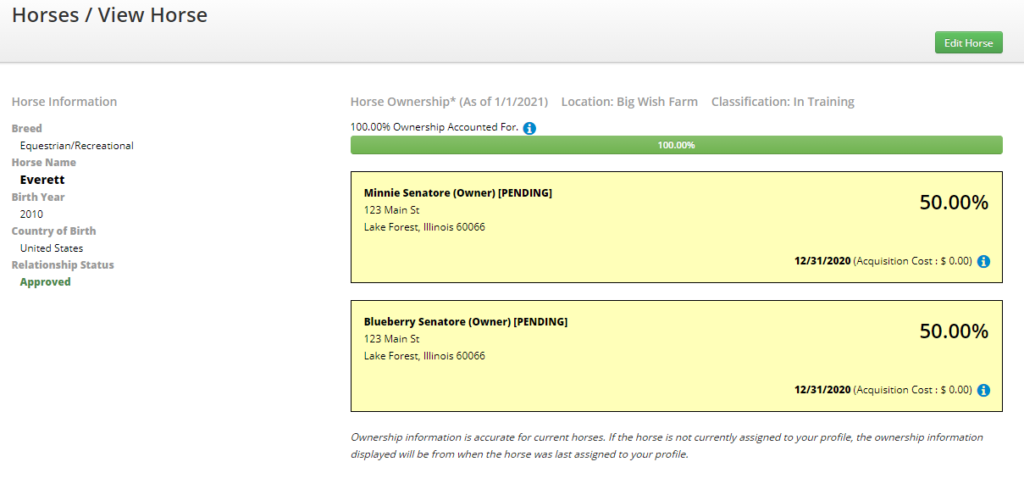
There is no limit to how many owners a horse might have (and vice versa), and percentages can be in any increment. Additionally, an owner can be added without any assigned horses. This is useful for syndicates or agents who may need to collect capital prior to the purchase of a horse, or for riding stables with clients who do not own a horse but are billed for lessons.
Once ownership is added and verified, billing is a matter of applying the appropriate charges to each horse. Our last blog post provided detailed information on how to automate monthly charges such as day rates and board, as well as add additional line item charges.
Standard Vendors (Farriers, chiropractors, vets, et al)
Further, Horsebills.com stores the ownership information for each horse input by their Primary Vendor, and this information can then be accessed (with permission) by any vendor seeking to bill the ownership group for the individual horse. A farrier, for example, would only need to reach out to the trainer of horses he serviced in the barn once to gain permission and find out who to bill. Once permission is granted, he/she can simply access the information through Horsebills.com and create invoices quickly without waiting on a response.
In the image below, we see a search for a horse by name (which must be entered exactly) in order to add to a Standard Vendor’s roster for billing purposes.

Once selected, the horse can be added to the account of the Standard Vendor, where all the ownership info will remain up to date with any changes made by the Primary Vendor.
Primary Vendors can also provide permanent approval to Standard Vendors who work regularly with their barn.
Syndicates
For syndicate managers, the storing of owner/partner percentages is an especially useful function. While your syndicate may only own a portion of the horse, multiple partners will each own a percentage of that portion. Horsebills.com is set up to manage these complicated details flawlessly.
In the image below, you can see the syndicate Summit Racing owns 80% of the horse Father Kyle. The three partners on the horse are listed, with their individual percentages adding up to the full 80%.

If the trainer or another vendor of Father Kyle utilizes Horsebills.com for his/her billing, the remaining 20% ownership in Father Kyle would then be assigned to the owner/s responsible for that portion. When he/she does the billing each month, the invoice will be split accurately between all owners automatically.
Additionally, any bill paid by the syndicate can be copied over as a line item owed by the partners with one click. The image below shows the check box when entering a bill manually.
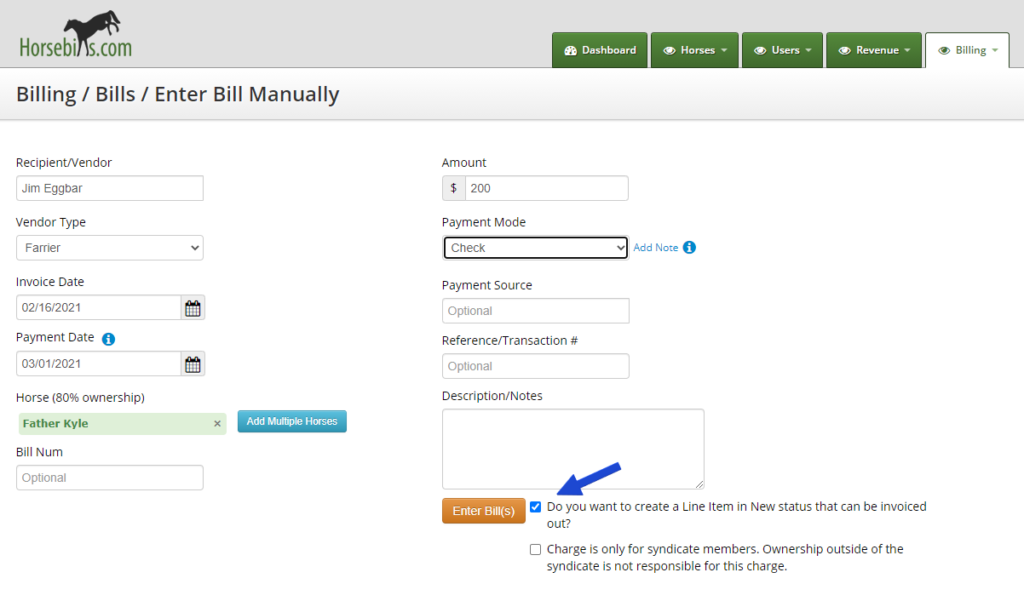
This can also be done with one click if the bill is created and sent directly through Horsebills.com. The image below shows how simple this is.
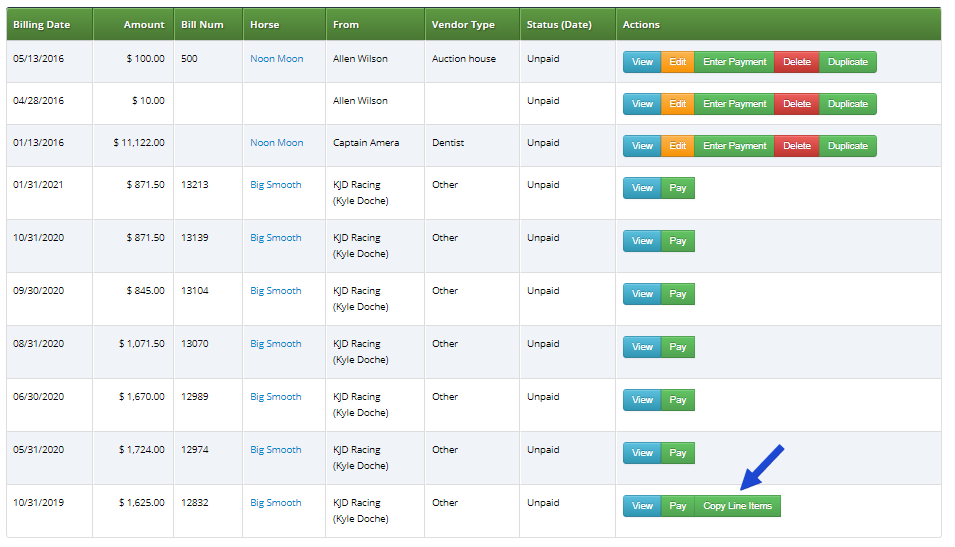
And here you see the line item we added manually automatically added to be billed out to each partner. It is important to note that the Horsebills.com system automatically accounts for 100% of the bill and has added on the 20% not owed by the syndicate. The syndicate and its partners will still only pay the 80% share of this bill.

Creating Bulk Invoices
Once all owners have been added and line items have been created, invoicing is a breeze. Simply click the Create an Invoice button on the Billing tab or directly from the Line Items page (seen below).
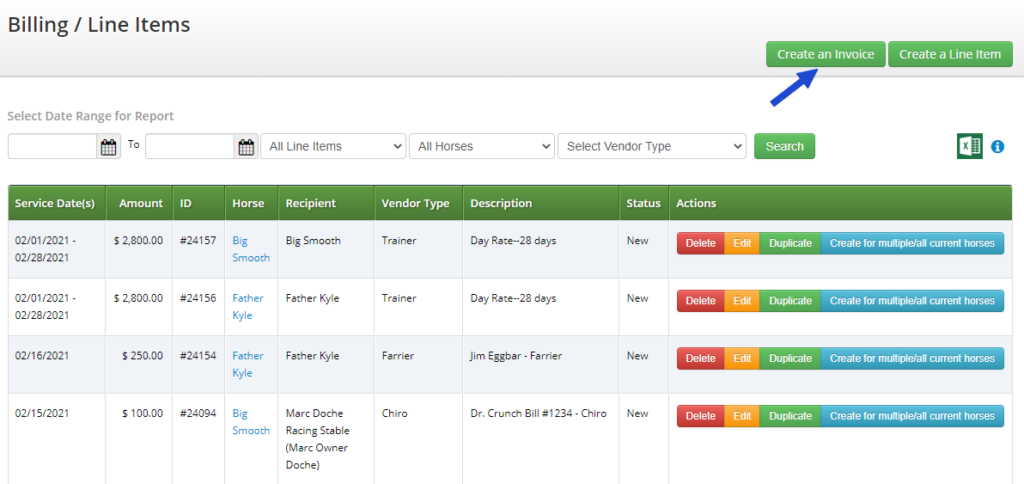
Then add the date range for which you are billing. This can be monthly, quarterly, or at any increment desired. For this example, we are billing for the month of February.

Once we set the date and click “Convert all New Line Items to Draft Invoices” we are taken to the Invoices/Accounts Receivable page where we can review the invoices for each horse and/or owner. At this point, we can click the “Preview/Edit” button in order to confirm all of the details are accurate.
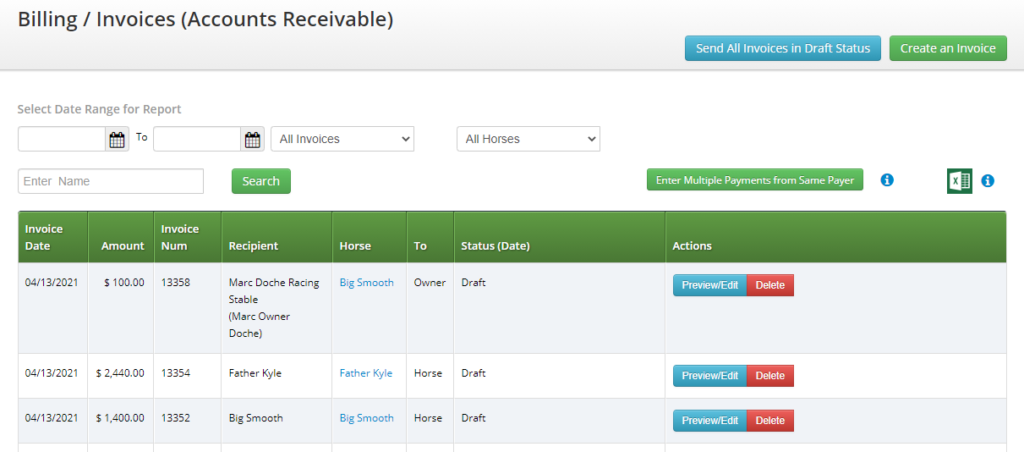
In the image below, we have clicked the “Preview/Edit” option and can see the details of the invoice for Father Kyle and can confirm their accuracy. One incredible feature unique to Horsebills.com is that input errors can be edited right here, instead of having to restart the entire billing process. Additionally, if an owner has credits on file, you can select whether they will be utilizing that credit to pay this invoice.
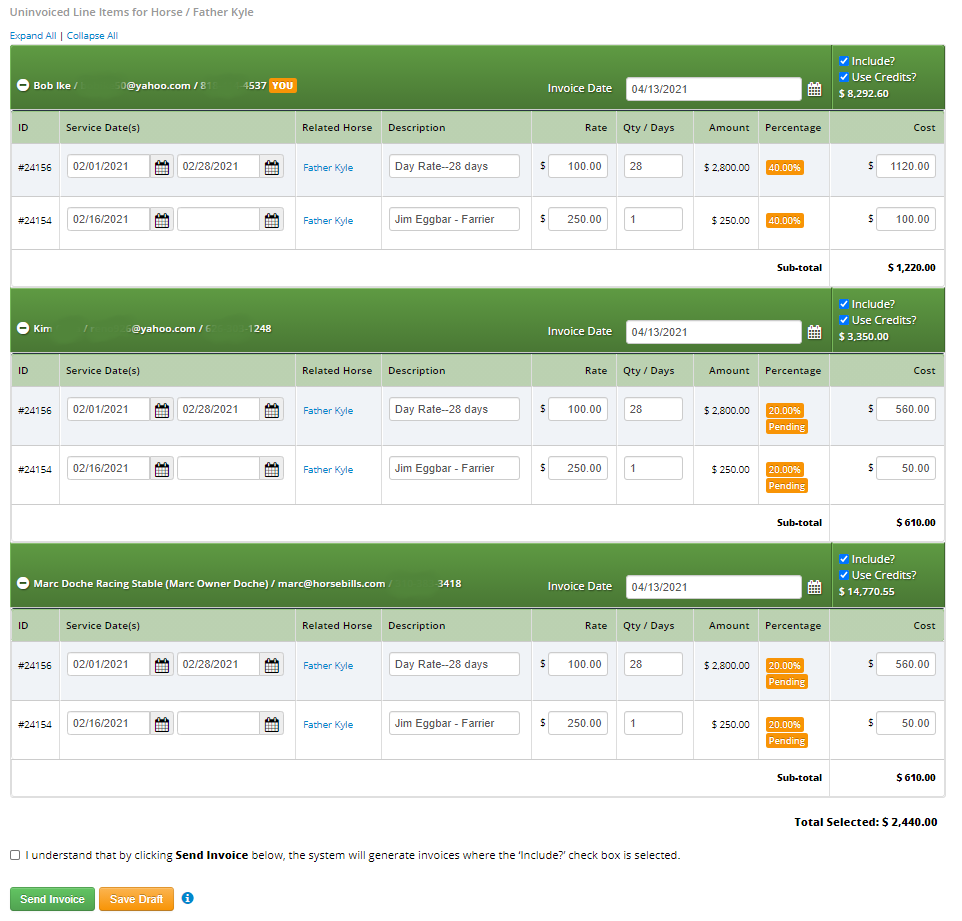
Once you have confirmed the accuracy of the invoice, you can either select “Send Invoice” directly from this page or go back and click “Send all Invoices in Draft Status” from the Billing/Invoices (Accounts Receivable) page to send all invoices at once.
That’s it, you’re done!
At Horsebills, we pride ourselves on our customer service, so if you any questions or require assistance, we are available to any extent necessary. Just email, call, or utilize the chat function located on every page of the site.
